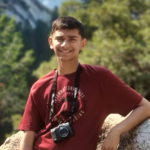Image from Atharva Sonune.
Washington High School’s Chemistry Club hosted its first event of the year at Tom Maloney Elementary School on Friday, December 13th. Aiming to foster growth in STEM (Science, Technology, Engineering, and Mathematics) fields, the club hosted a presentation for over 80 fifth-grade students. From eye-catching experiments like the “Traffic Light” to the more interactive slime-making station, students had the opportunity to see the concepts taught in their science classes play out in front of their eyes.
The event required meticulous planning—the club’s members had barely an hour and a half to get through a presentation and six stations, with students rotating every 15 minutes. Each group had over 10 students, making safety a major concern—reactions like the “Traffic Light,” a color-changing solution, used hazardous chemicals that could cause severe rashes and burns. However, the club’s leadership was able to navigate through these problems by drawing on previous experiences.
Two years ago, the club’s President, Akshobaya Prabhu, and Vice President, travelled to Maloney for a similar demonstration, albeit on a much smaller scale: they planted a tree in the drive-through loop and presented reactions like the genie-in-a-bottle and elephant toothpaste. The success of this visit inspired the two students to repeat the demonstrations on a grander scale this year.
Friday’s event had nine students from Washington High School leaving campus after third period and spending an hour setting up in Maloney’s gym. Some experiments were easily repeatable—senior Victor Vieux’s “Pharaoh’s Snake” only required a detailed eye for measurements—but others were more complex, with Radu Costache’s “Iodine Clock” taking almost ten minutes to reset for each group of students. The more interactive stations, like Vishnu Chakka’s slime-making table, used up almost a gallon of glue and had Chakka constantly pouring activator and sealing Ziploc bags.
The fifth graders had a fantastic time at every station, with one student being able to describe the intricate phenomenon behind Joseph Chong’s handwarmer station. The elementary school’s science teacher, Ms. Batalao, also stopped by, watching all the stations with great curiosity. At the end, she even asked the club to take a photo for Maloney’s yearbook. The students also had a blast. Divya Rejeev, a fifth-grader, said, “The experience was very interactive, and I learned a lot about energy’s role in science.”
There were difficult moments, with the projector screen taking more than ten minutes to set up and derailing the club’s schedule, and some stations ran into problems with waste disposal and resetting experiments. However, the club’s leadership was able to assist and ensure smooth operations, with every fifth grader having the opportunity to watch every experiment unfold.
The Chemistry Club hopes the event at Tom Maloney will inspire other elementary schools to allow them to host similar demonstrations on their campuses. Extending a special thanks to Principal Christopher Wood and fifth-grade teacher Mr. Christopher Isaacs, the club looks forward to the second semester and is already planning for their next event.
Atharva Sonune, currently in his Junior Year, has had a diverse upbringing that spans India, Ohio, and California. Embarking on his inaugural year at the paper, Atharva brings a fervent curiosity for journalism. His passions encompass a wide array of topics, including emerging technology, economics, and politics. Beyond the world of writing, Atharva actively engages as a dedicated DECA member, is interested in guitar, and loves to edit videos. He wishes to hone his photography skills and is currently focusing on getting ready for college applications next year.


